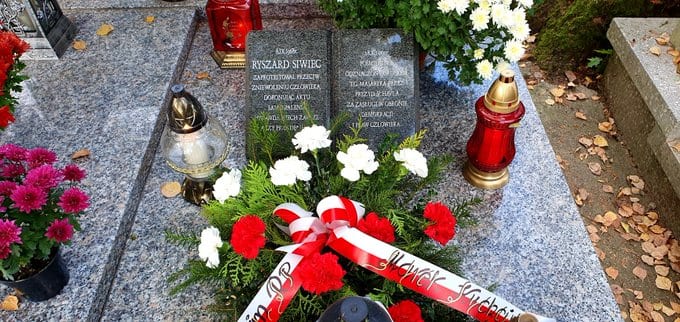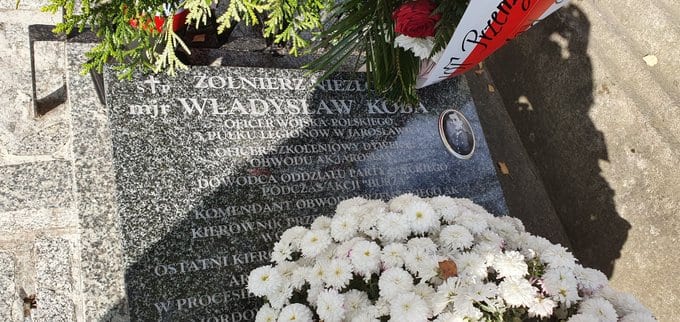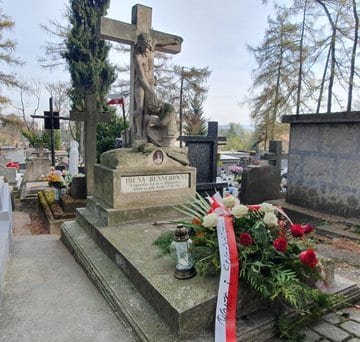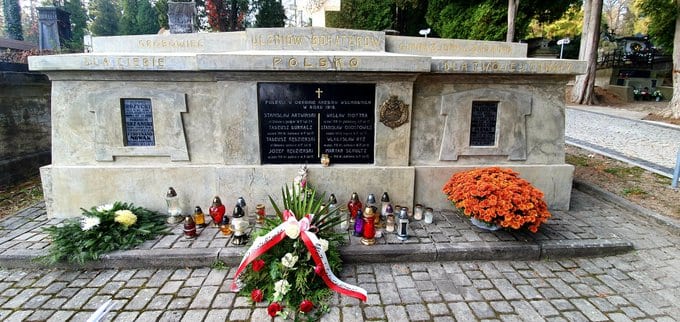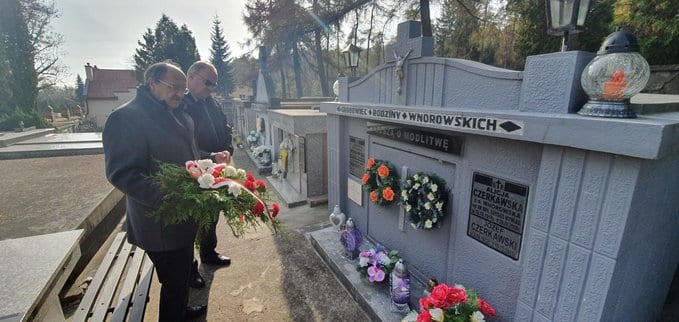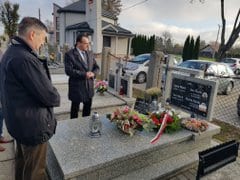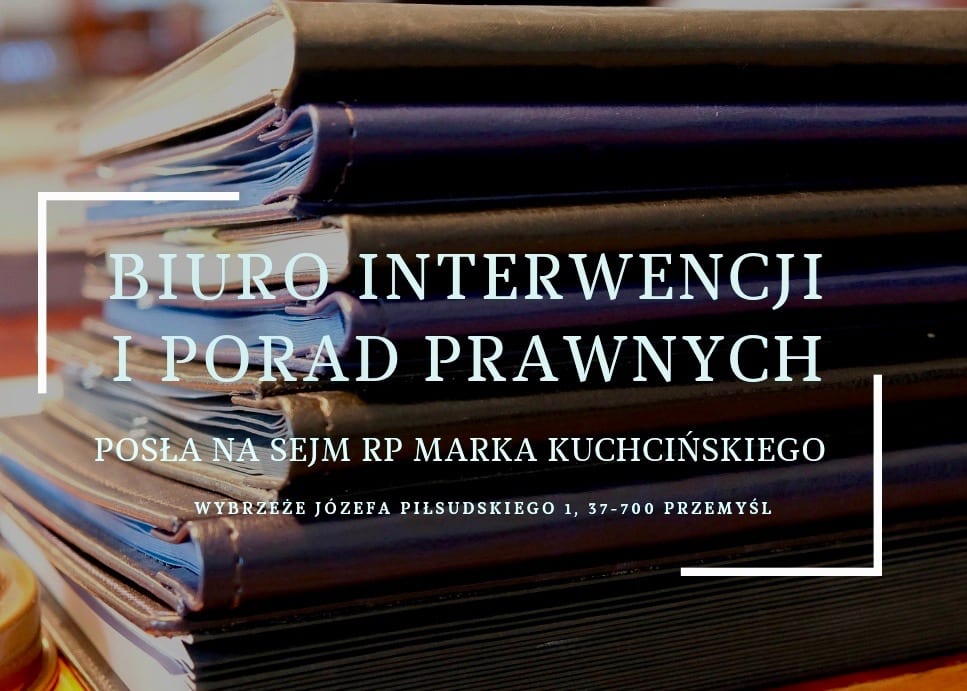From the dramatic times of the Second World War and the following decades of Przemyśl's existence, we can recall almost symbolic figures, confirming the personalistic thesis that man is a value, and the proof of this is the love of freedom.
The number of families (often of many generations) involved in the independence movement was very large in the Przemyśl area. Let us remind some more members of the underground movement. The first one is the commander of Rzeszow District of WiN Major Władysław Koba, whose funeral took place only in 2016. Above all, however, we should mention the amazing, heroic Second Lieutenant Alicja Wnorowska of the Home Army Intelligence Brigades (the name says it all!), and later WiN, who lived on Matejki Street. She was arrested when she was 8 months pregnant and gave birth to her son Stanislaw (who became a Przemyśl councilman in the 1990s) on death row. Only in 2018. The Sejm passed a law ensuring children born in communist prisons (there were 40 of them) the right to compensation. It is also symbolic that this law was "piloted" in the Sejm by Przemysl MP Andrzej Matusiewicz, an experienced lawyer and defender in political trials from the communist era.
We will always remember Ms. Alicja from the antique shop where she worked in the 1970s, in the arcades of the Przemysl market square. We used to come there after school, looking for books that would help in our youthful search for heroes and their adventures. And sometimes, "quite by accident", on a long, old bookstore counter, but close at hand, as it were, an old novel by Ferdynand Ossendowski (!), Paweł Jasienica, a report by Melchior Wańkowicz or a well-preserved pre-war biography would appear. At the time, it seemed to us that these were just ordinary cases, but fascinating, because the shelves of an antiquarian bookshop seemed like a wonderland. Today we know that behind the kindness of Alicja, our next-door neighbor, there was a natural impulse to pass on to the next generation signs, symbols, and sources that are important to every young person.
Another example is the Mech family from Żurawica. Many of its members fought in the underground, first against the Germans and later against the Soviets. The grave of Szymon Mech, commander of Kedyw in Zurawica, who was denounced in the last days of the German occupation, has not been found to this day. His daughter Czesława "Niezapominajka" was a Home Army liaison officer. His son Jan was decorated with the Golden Cross of Merit by the President of Poland Lech Kaczynski for his service in WiN.
We remember (yes, we still remember, although 50 years have passed!) the unbelievably dramatic act of Ryszard Siwiec, who - crossing the limits of heroism and at the same time fully consciously - in protest against the Warsaw Pact invasion of Czechoslovakia, immolated himself in front of tens of thousands of people on 8 September 1968 (during the national harvest festival in the stadium in Warsaw). To this day, this act is also remembered in Prague, and the Thinker, to whom a monument was erected there, has become, together with the Czechs Jan Palach and Jan Zajíc and the Hungarians Sándor Bauer and Márton Moyses, a symbol of the fight for freedom. They all chose death because they believed that in the struggle for freedom no sacrifice is too great, and only such radical protest can shake up society in defense of solidarity and spur people to action. Richard's family also became involved in the changes that culminated in the great Solidarity movement 20 years later. Let's take note of the student protests that took place a few months earlier, mainly in the universities of the biggest Polish cities, which also had their accent in Przemysl. They were formed by high school students for whom March '68 was a spark to manifest their opposition to communist power and unjust rule. Actions and protests were organized by, among others: Damian Zegarski, a student of mechanical engineering school, the initiator of various forms of protests, also at the Adam Mickiewicz monument in the Przemysl market square; Ryszard Góral, today a legal advisor, but in those days an activist of an independent youth organization emphasizing the Polish identity of Przemyśl, later associated with the underground Solidarity; or the youngest organizer of the student uprising in 1968. He was one of the founders of paratheatre in Poland in the student movement of the 1970s (at the Catholic University of Lublin) and an activist of the "Solidarity" movement in Kujawy, currently a poet, columnist, and ecologist. The aforementioned Adam Mickiewicz monument in Przemyśl remained for many years a cult place for various independent initiatives.
The already mentioned Matejki street is also an interesting example of the concentration of meanings and symbols from the history of the city recorded in the lives of its inhabitants. At its top, just below the castle, stands a lonely, tall obelisk, with its history dating back almost to the times of the last Jagiellons - a legendary symbol of the effective defense of the city against the Tartar invasions. Formerly, before the war, it was called "Ptasia" and was one of the oldest streets. Not very big (in the Old Town all streets are like that), located near the castle, it has 13 numbers, but almost under each of them some important event took place or interesting people lived. Apart from the already mentioned Alicja Wnorowska, the legendary Marian Stroński - one of the greatest Polish painters of the 20th century - lived there. The neighbourhood of the castle hill resulted in many excellent landscapes of Przemyśl created by him, views of old streets, fragments of the castle, beautiful chestnut trees and lime trees. On the terrace of his house, the painter recorded cubist views of Zasanie. Kazimierz Cieszyński, the last president of the pre-war "Sokół" society, lived in the house next door; his neighbor was Zbigniew Kuchciński, the first president (and co-founder) of the Przemyśl branch of the Lvov Lovers Society, and Artur Jędruch, the later regional police chief, grew up next door. Also living on Matejki Street is Bogusław Zaleszczyk, chairman of the Przemyśl City Council, a descendant of one of Przemyśl's Eaglets. From a house on this street an independent program of the underground Solidarity radio was broadcast in 1986. Matejki Street is also home to two Christian churches of various denominations. And at the very beginning of the street, in a small house with a beautiful wooden balcony, which is leaning against the weight of centuries, lived Mr. Emil Siara, who with his family during the German occupation hid several Jewish families in Ujkowice near Przemyśl, saving them from death.
There are more similar streets, places and people here. The architecture of such an old town street, usually connected with the memory of generations of people living there, has a unique, sentimental charm of some mysterious, undiscovered past, which becomes more and more significant with time.
Text Marek Kuchciński
